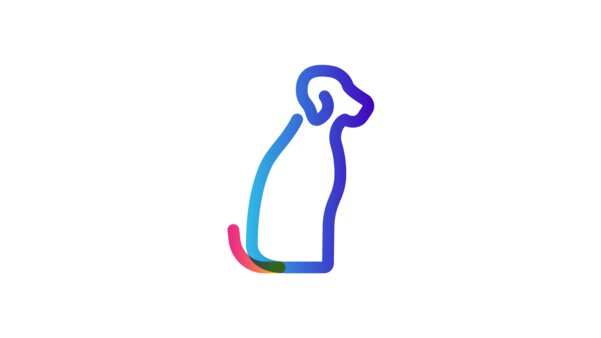What is an Autism Assistance Dog?
Published on 13 December 2023
Author: Caroline Preston (CEO) and Ruth King (Business Development Manager)

Written by Caroline Preston (CEO) and Ruth King (Business Development Manager) on behalf of Autism Dogs Charity, this article outlines the benefits of Autism Assistance Dogs, as well as the key differences in the role and outcomes when compared to a Therapy Dog. The article is based on techniques and outcomes delivered by Autism Dogs Charity, which is recognised as working with the most vulnerable autistic clients in the UK, and remains the only assistance dog charity accredited by the National Autistic Society at the time of publication. The charity has a unique approach to supporting the beneficiary family, along with bespoke training for specifically assessed dogs in a programme designed to attain the best possible outcome for the autistic child or adult.
In times of anxiety and distress, the reassuring presence of a dog provides comfort, distraction, and an improved sense of wellbeing. For many autistic people, the use of Animal Assisted Therapies provides opportunities to grow in confidence, practise communication skills and achieve greater focus within the school, hospital, or care home settings in which they are provided. The documented biophysical impact can help autistic people to feel less anxious and more willing to participate in therapy sessions (Ang and MacDougall, 2022). Whilst our Autism Assistance Dogs do offer a therapeutic benefit, their impact goes far beyond that of a Therapy Dog. As the mother of one of our clients recalled when responding to our 2021 survey, ‘My son did not walk outside at all before we had an Autism Assistance Dog. Now he does.’ It is important to recognise that the difference between a Therapy Dog and an Autism Assistance Dog is not merely the ability to lawfully access public places like shops and restaurants, but the specific tasks they perform that enable their handlers to enter these spaces. Furthermore, to manage the individual challenges that they experience and consequently improve their daily lives.
Amongst other practical tasks, our Autism Assistance Dogs are trained to respond to anxiety, meltdowns and harmful physical behaviour. Each Autism Assistance Dog will be trained to perform these tasks to mitigate their handler's challenges by the time they qualify, and each dog’s skillset is uniquely selected and adapted to fit the individual experiences of the autistic person they support. From data that we have collected from the autistic handlers of our Autism Assistance Dogs and from their families, we have been able to identify the impact of our dogs’ tasks. The study shows a clear and dramatic difference between behaviours ‘before’ and ‘after’ having an Autism Assistance Dog, including in the behaviours that present some of the most profound challenges to daily life. For example, one of our parents stated that their child had self-harmed at least seven times a week before receiving their Autism Assistance Dog. Following the dog’s introduction, the child did not self-harm at all. We have received many reports describing similar dramatic changes, which are a result of Autism Assistance Dogs directly intervening with actions such as nudging, pushing hands apart with their nose, nuzzling and lying across their handler to provide Deep Pressure Therapy.
The success of the Autism Assistance Dog partnership is dependent on understanding and making provision for the needs of both the handler and their dog. It is achieved by gaining a detailed and accurate understanding of each client and their challenges and providing specialist or expert support to the autistic individual throughout. Similarly, we must understand the individual characteristics of our dogs to then select them based on their suitability. Preparation includes desensitizing them to their handlers’ unique movements, sounds and physical behaviours. By prioritising the welfare and happiness of our dogs and instructing families how to provide this level of care, we encourage the development of a strong bond between dog and handler. This bond ensures that our dogs remain responsive and effective, but also brings a deep and lasting friendship to the lives of those who feel isolated from their peers, and have previously been excluded due to distressed behaviours, anxiety, or difficulties with communication.
An Autism Assistance Dog is a constant source of support, and so the effect of this support is found in multiple areas of life. For some, the result is all-pervading. Their Autism Assistance Dog improves sleeping patterns; encourages exercise; enables the development of speech and communication skills; and brings a sense of security and confidence that can enable the autistic person to face and overcome a range of obstacles in daily life. For example, a large majority of our handlers have experienced an increased ability to cope with spontaneous change and spend more time in a state of contentment and relaxation. We have had the privilege of seeing autistic people becoming frequent users of public transport, successful school and university students and employees. Others are gaining greater independence as they meet up with friends and participate in social activities. For many, these achievements would have seemed impossible before the introduction of their Autism Assistance Dog.
We measure the success of an Autism Assistance Dog on the improvement to daily life. The milestones and aspirations that our handlers pursue, the reduction in distressed behaviours, and the numerous accounts of vast improvements to functioning, independence and overall wellbeing are testament to the confidence, support, and utter transformation that a trained Autism Assistance Dog can bring. The introduction of an Autism Assistance Dog is more than a therapeutic aid and positive distraction; it is a targeted, specialist intervention with comprehensive support that changes the course of the individual’s life in a wholly unique and remarkable way.

